The Democrats Have a Religion Problem
Most Americans are Still Christians -- Democrats Seem to Have Forgotten
I must admit something: I have no idea how the average American thinks about religion and politics. That’s just a blind spot that academics have, I guess. We spend almost every waking moment thinking about these topics, while many other folks don’t think about them at all. It’s a strange reality to wrap my head around. So my goal in doing all this writing is to give the average person a kind of mental scaffolding to better understand the subject I study most. Hopefully, that framework will help them sort and classify new information when it comes.
So, with that preamble, here’s a true, simple, and profound fact.
Eighty percent of the people who voted for Donald Trump identify as some type of Christian. It was 48% for Harris voters in 2024.
Just 17% of Trump voters identified as atheist, agnostic, or “nothing in particular.” Nearly half of Democrats in 2024 (45%) were non-religious.
The God Gap in American Politics
If there’s one catch phrase in my little corner of the social science world it’s, “The God Gap.” It’s the simple idea that the Republicans have become the party of religious folks, while the Democrats are much less religiously inclined.
In short, it’s much easier to deliver a coherent religious message as a Republican candidate than as a Democrat. If you’re working for the GOP, something along the lines of “God, Country, and Traditional Family Values” resonates with nearly all your voters. For Democrats, it’s not that simple. A message of faith and values will probably turn off as many voters as it attracts.
But here’s what makes things even tougher for modern Democrats: their “religion problem” is deeply entangled with race. Essentially, the party now has a large cohort of non-religious white voters alongside a diverse coalition of voters of color who remain deeply religious. Comparing the religious affiliations of Democrats in 2008 versus 2024 makes this clear.
In 2008, most white voters who supported Barack Obama were religious. Just 38% identified as non-religious, while 55% were Protestants or Catholics. By 2024, those numbers had flipped: 55% of white Democrats were non-religious, and only 38% were Protestants or Catholics. That’s a complete reversal in just 16 years.
Compare this shift to Black Democrats. In 2008, 61% were Protestants or Catholics. By 2024, that figure had actually risen to 64%. Their non-religious share fell slightly, from 35% to 31%. Among Hispanics, the Christian share dropped from 74% to 62%, while their non-religious percentage increased by 12 points. For Asian Americans, the Christian share slipped from 30% to 29%, but the non-religious share rose by 6 points.
When you collapse these groups into white versus non-white Democrats, the divide is stark. In 2008, 55% of white Democrats were Christians versus 61% of non-white Democrats. White Democrats were more likely to be non-religious (38% vs. 32%). By 2024, those gaps had become much larger: only 38% of white Democrats were Christian, while 55% were religious “nones.” Among non-white Democrats, 55% were Christian (17 points higher than whites), and just 38% were non-religious (17 points lower).
Just think about the challenge a candidate faces when trying to appeal to one group that is 38% Christian and 55% non-religious, and another that is essentially the opposite. How do you navigate issues like abortion access or whether teachers should use a child’s preferred pronouns without parental consent? These groups are not remotely on the same page—something I’ll return to later.
This racial “God gap” also emerges when you look at church attendance.
In 2008, 57% of white Democrats attended a house of worship less than once a year, while 18% attended weekly. Among non-white Democrats, weekly attendance was nearly double that (34%). The share of non-white Democrats who never attended church was 13 points lower than their white counterparts, and their “seldom attend” group was six points lower.
By 2024, the gaps had grown. Here’s the tweetable stat: nearly three-quarters of white Democrats in 2024 seldom or never attended a house of worship. That’s remarkable when compared to the national figure of 55%. Only 12% of white Democrats attended weekly. Put differently: for every weekly-attending white Democrat, there are six who attend church less than once a year.
Among non-white Democrats, the picture is much closer to the national average. About 24% still attend weekly, and 54% seldom or never go. In other words, the “average American” looks a lot like the “average Democrat of color” in terms of religious activity.
Looking at religious importance tells a similar story. I plotted the share attending weekly (y-axis) against the share who said religion was “very important” (x-axis).
The first thing to note is that white Democrats are far less religious than Democrats of color. Even comparing non-white Democrats in 2024 to white Democrats in 2008 reveals a notable gap. It would likely take another eight to ten years for non-white Democrats to reach the same level of secularization that white Democrats had already reached in the Obama era.
But here’s the striking piece: among Democrats of color, the share who said religion was “very important” dropped from 58% in 2008 to 38% in 2024. For white Democrats, the decline was only about 10 points. Part of this divergence comes from what I’d call a “floor effect”—it’s easier for numbers to fall from 45% to 35% than from 25% to 15%. White Democrats pulled away from religion earlier, so Democrats of color still have more room to fall in the years ahead.
Now let’s connect this directly to politics.
Among white religious Democrats, just 12% described themselves as “very liberal” in 2008, ticking up slightly to 16% in 2024. For non-white religious Democrats, there was virtually no change (44% in 2008, 45% in 2024).
Among the non-religious, however, the ideological shift is much sharper. Among white nones, 27% were “very liberal” in 2008; in 2024, it was 37%. Now, 77% of white non-religious Democrats identify as liberal overall. Among non-religious Democrats of color, the “very liberal” share rose from 19% to 26%. Today, 63% of them identify as liberal.
This contrast shows up clearly in policy attitudes.
For example, 6% of white non-religious Democrats support banning abortion pills by mail, compared to 32% of religious Democrats of color. On whether teachers should obtain parental consent to use new pronouns for children, 27% of white secular Democrats agreed versus 51% of non-white religious Democrats. There’s a 15-point gap on banning out-of-state abortions and a massive 34-point difference on supporting school voucher programs.
Most Americans Are Still Christians
Don’t forget that I am offering a discount on subscriptions through December 25th - $40 for the year. You can take advantage through this link.
This structural problem runs deep within the two-party system. In the 1970s, when more than 90% of Americans were Christian, both parties had to compete for their votes, drawing dividing lines in other ways. But in today’s America—with 60% Christian, 30% non-religious, and 10% other—the splits don’t align as neatly.
Democrats can’t win national elections on the backs of the non-religious alone, but they’ve also ceded large swaths of the Christian vote to Republicans. That leaves them with a coalition that risks alienating either Christians of color or secular whites, depending on how the message is framed.
It’s almost as if Democrats are building a coalition that might thrive in 2050. The problem is, it’s only 2025.
Code for this post can be found here.
Ryan P. Burge is a professor of practice at the Danforth Center on Religion and Politics at Washington University.



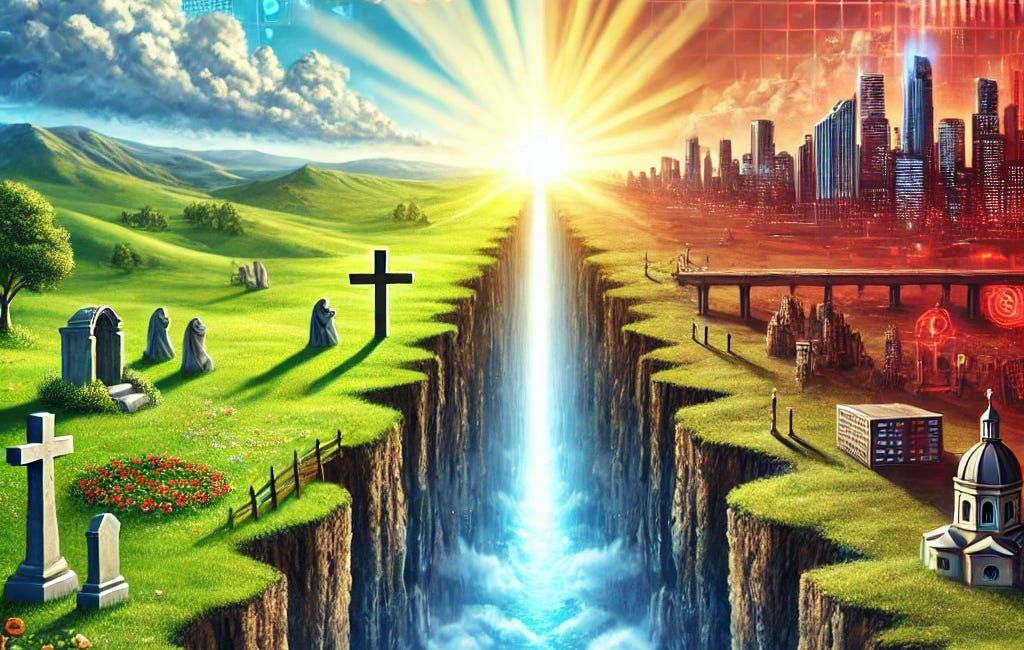
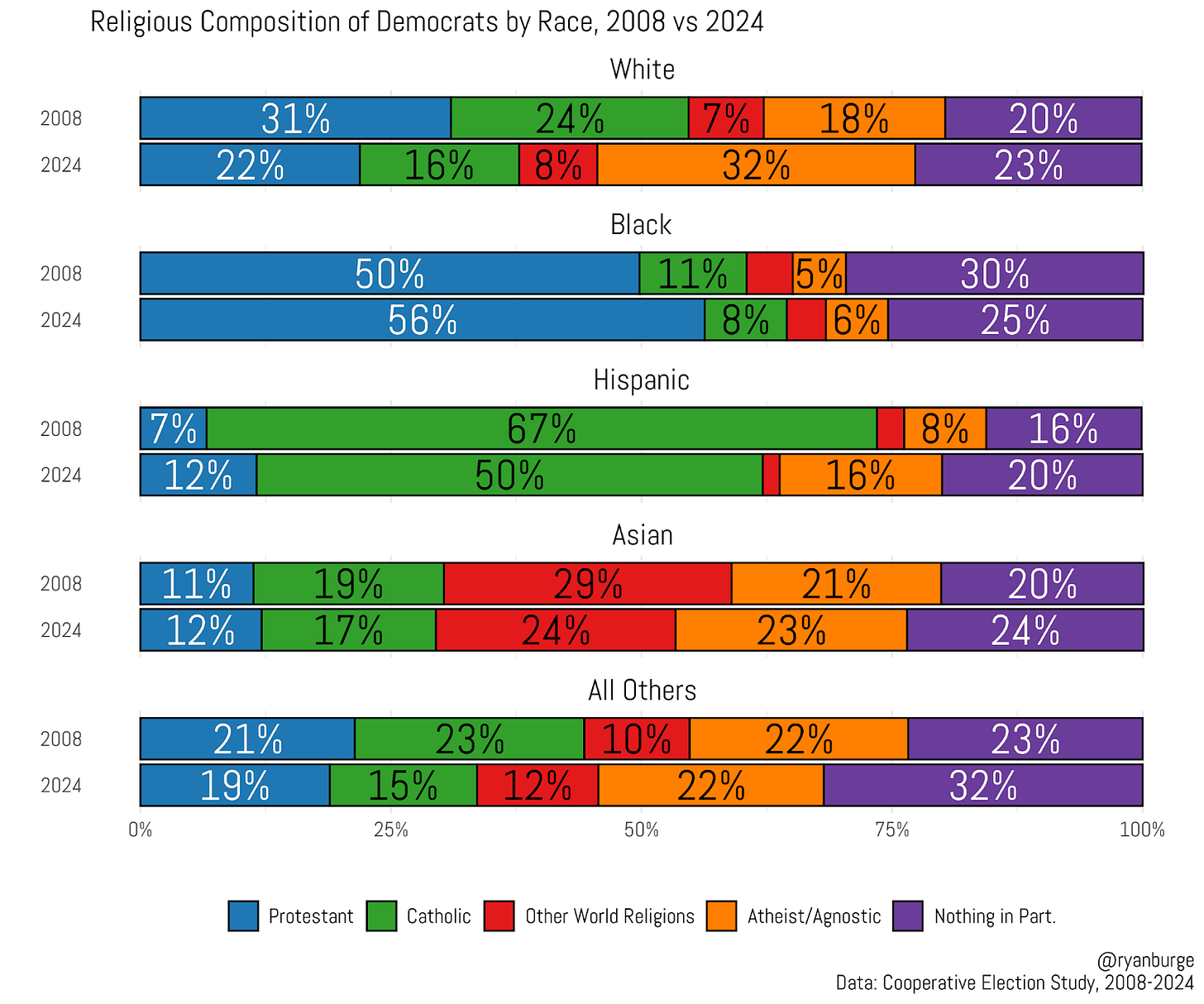
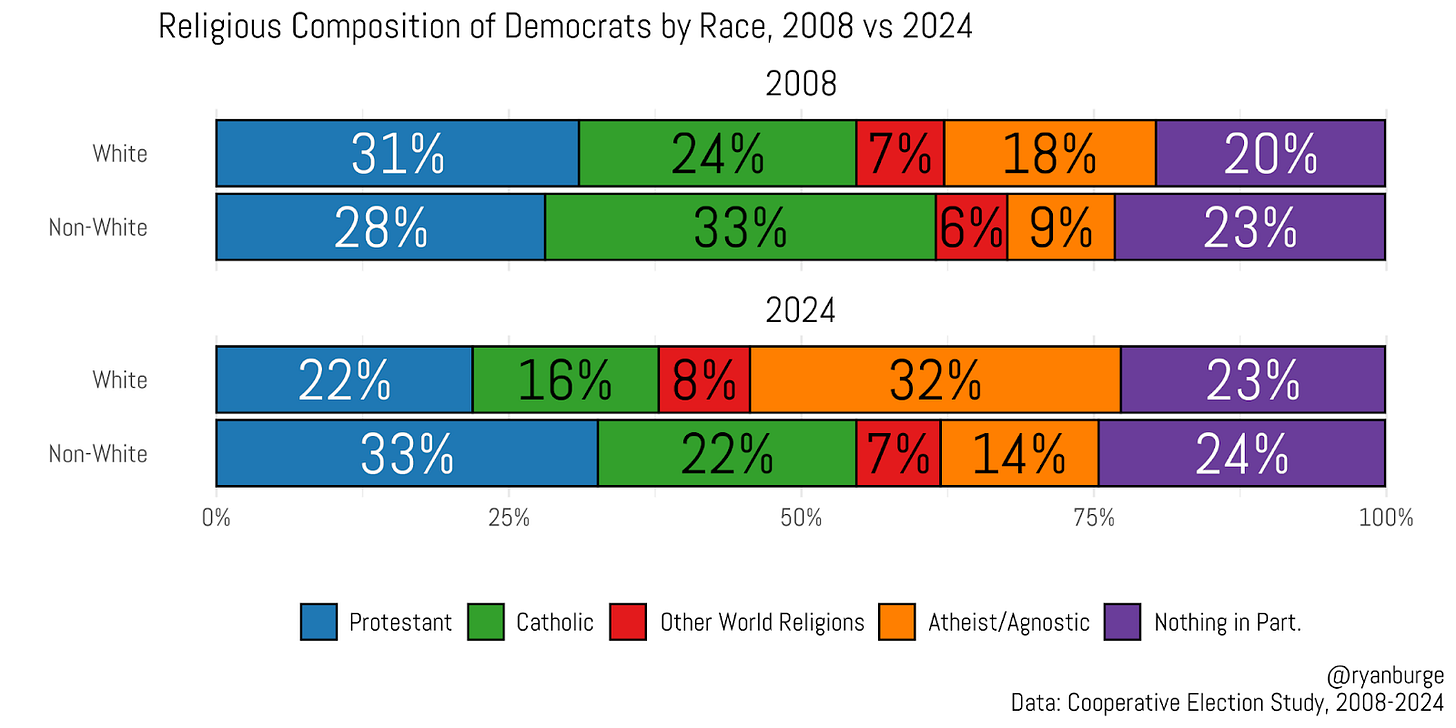
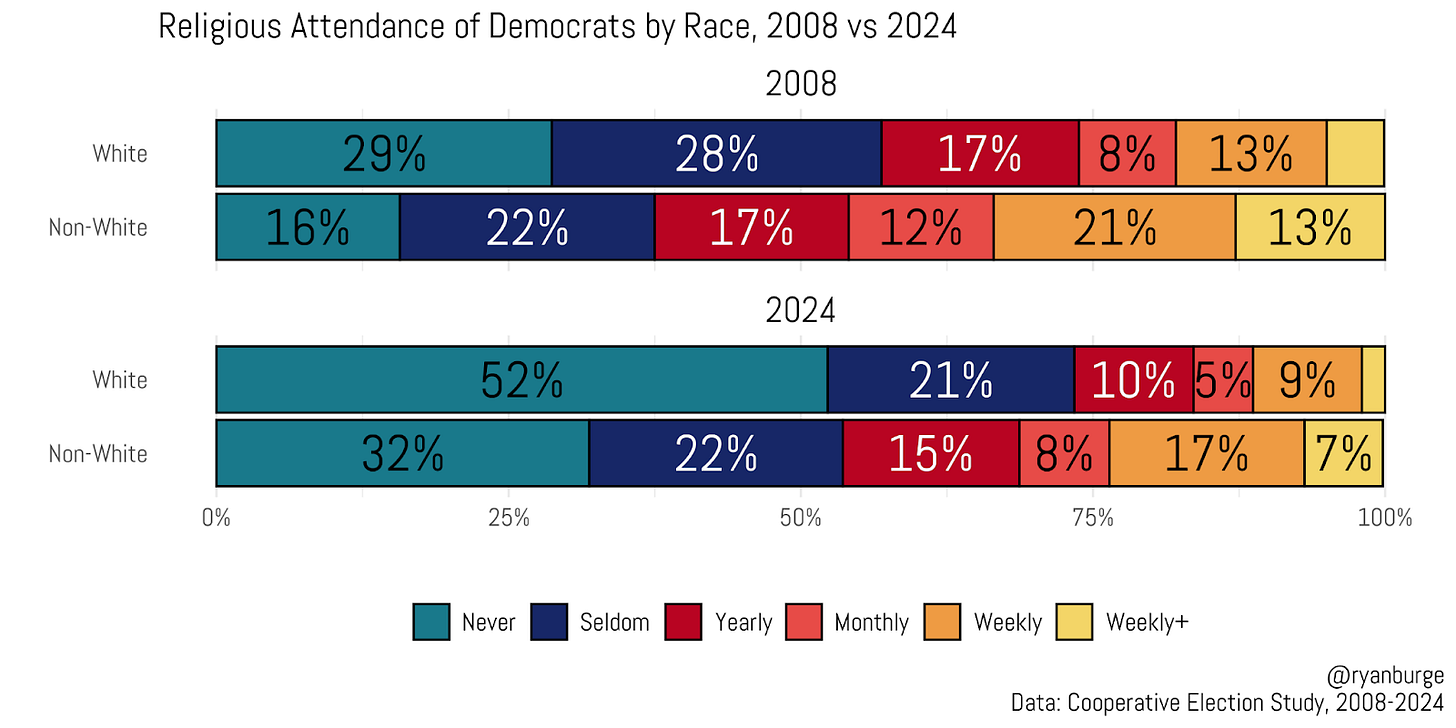
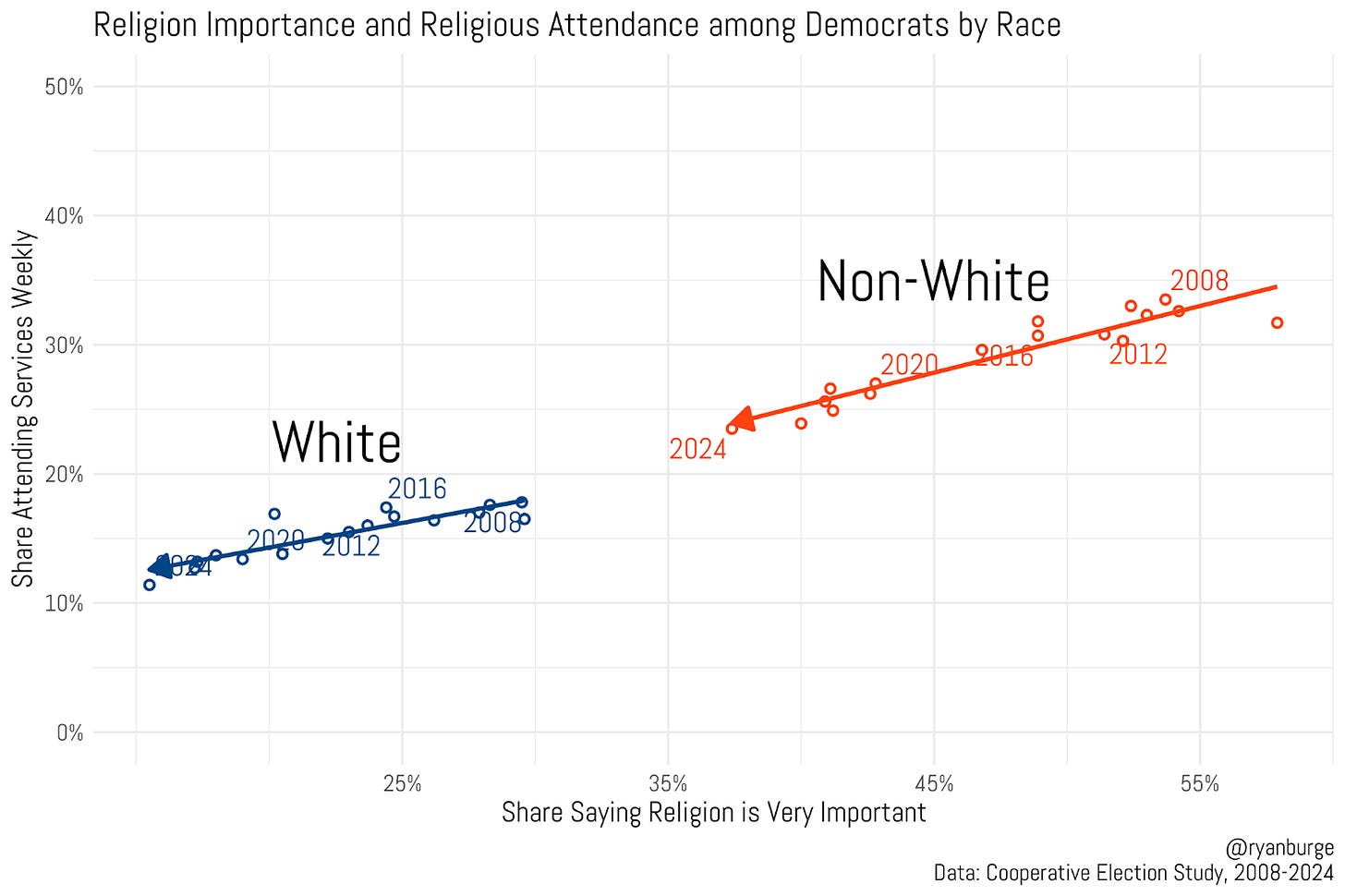
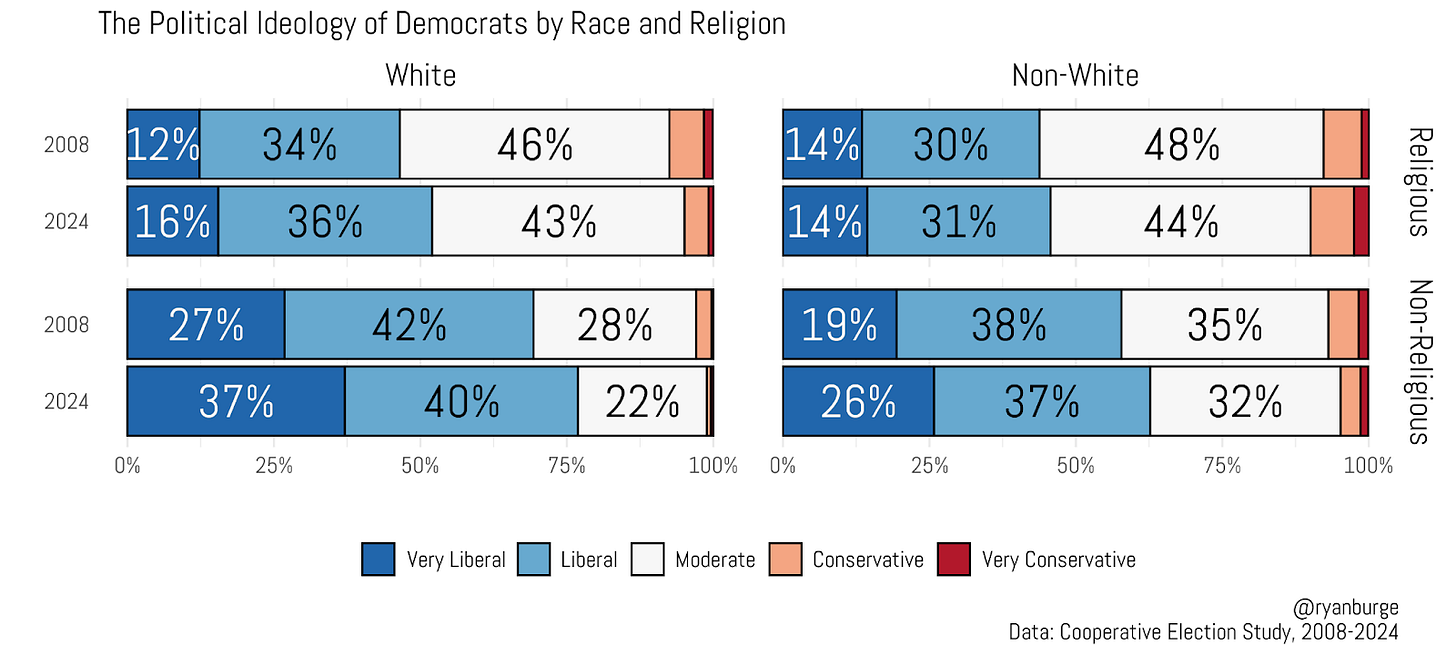
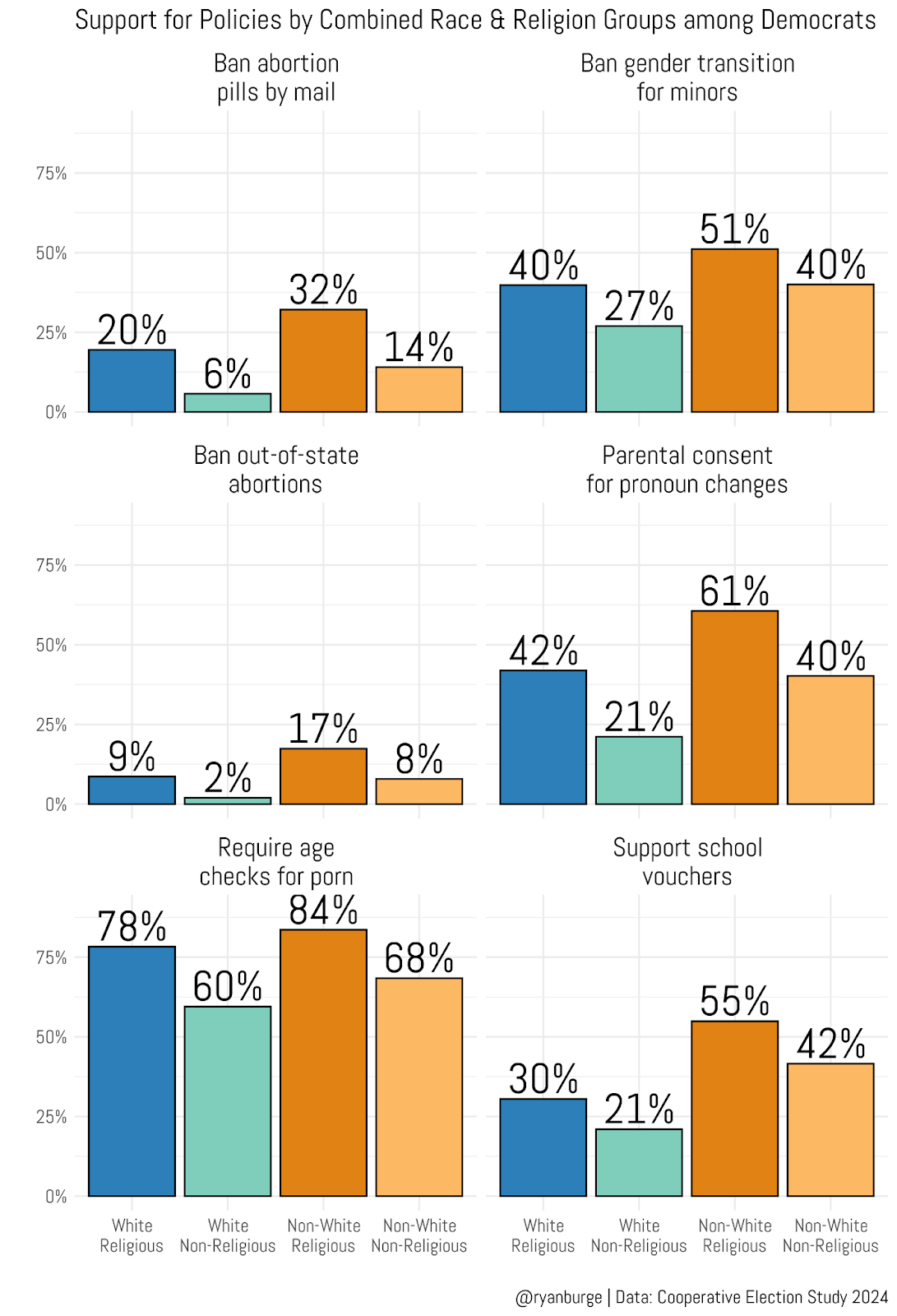
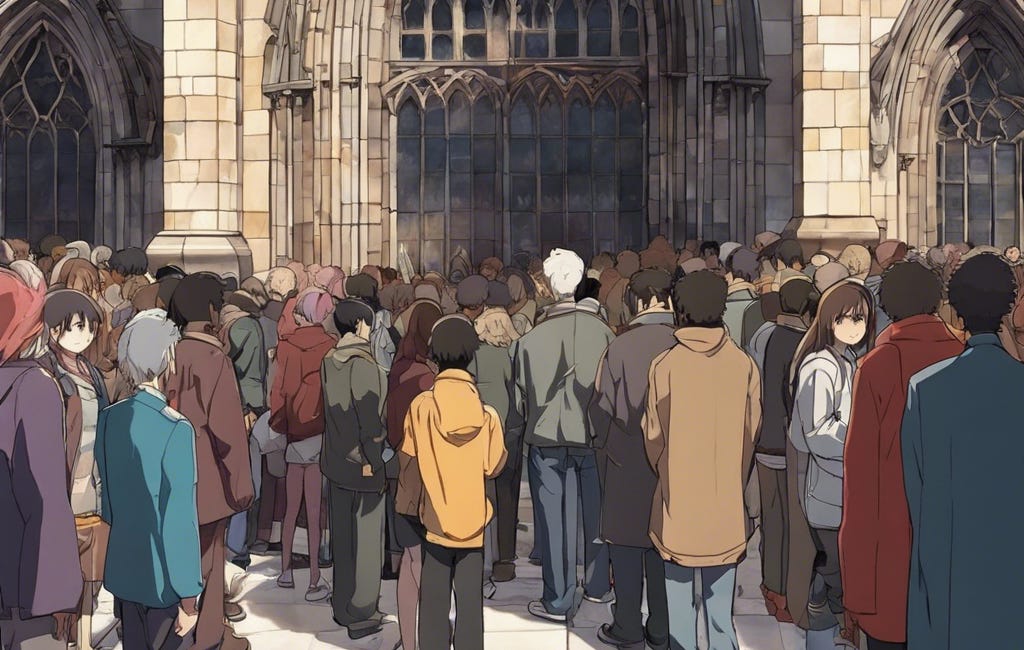

Thanks Ryan, fascinating as ever. You've said a few times that the data seems to show that people are driven by self-identified political affiliation first rather than religion. More people identify as Christian because they identify as Republican than the other way around. I wonder if this means that in the next decade or two the negative reaction to the current Republican policies, especially from young people, will actually drive people away from religion. Not because of issues to do with loss of faith, but because they identify as Democrats first and being non-religious is part of that identity.
Maybe the cohort of ‘White Christian’ includes those who read the New Testament and then deny Jesus’s emphasis on loving their neighbor.
They may identify as Christian but they are not followers of Jesus.